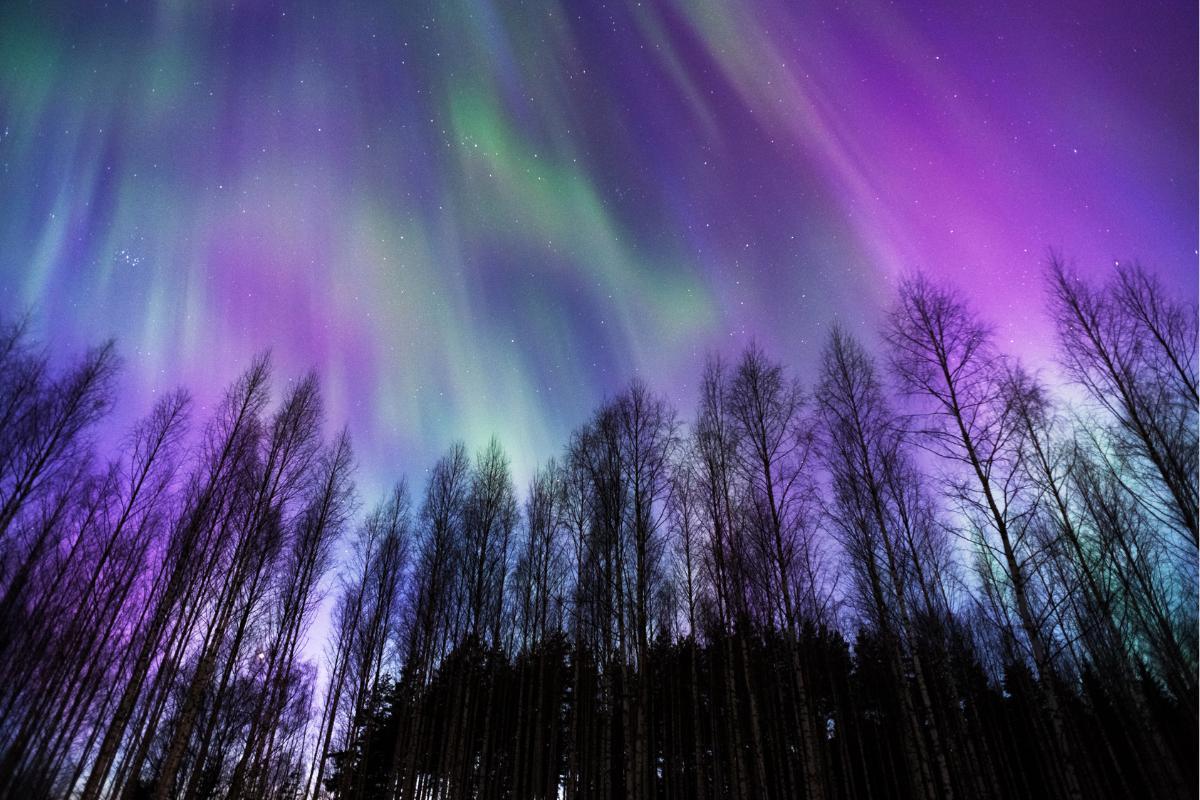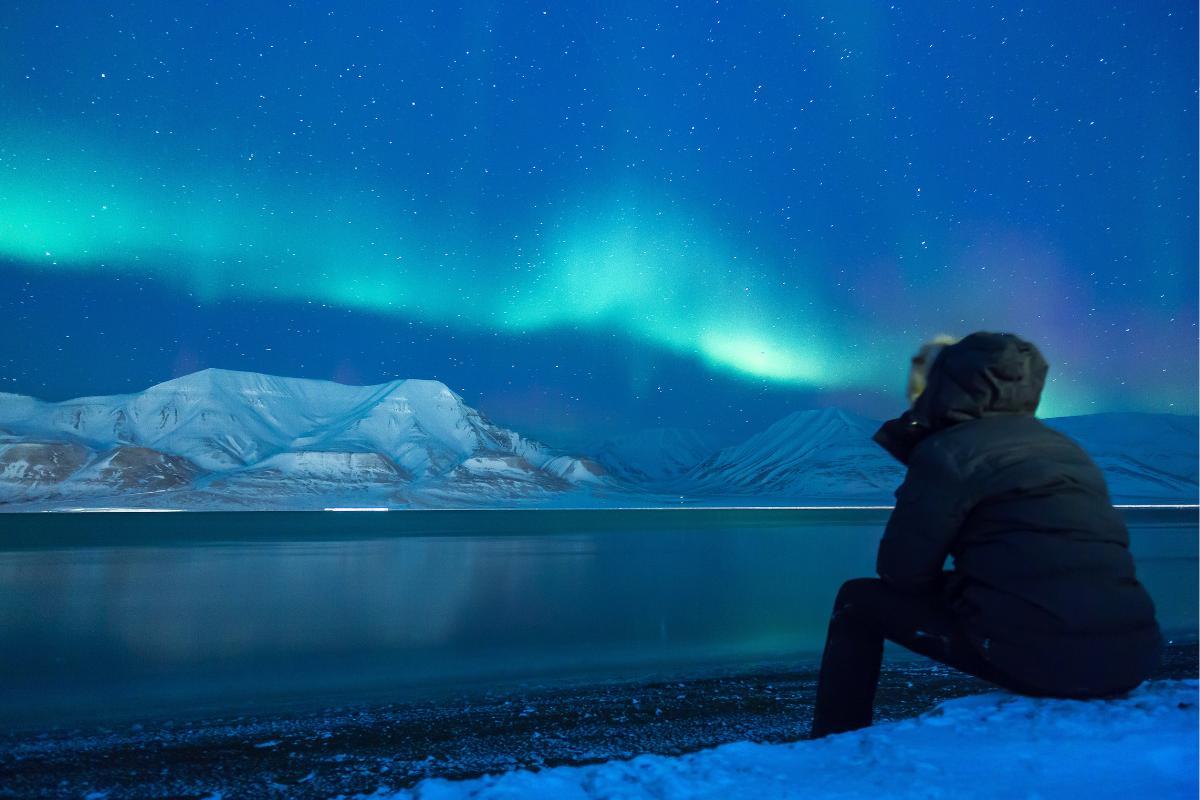What Are Northern Lights?


The Northern Lights, also known as the Aurora Borealis, are light natural phenomena. They appear as ribbons, streaks, spirals, or flowing curtains of light, most commonly in shades of green, but also red, purple, and white. These light displays, often seen in polar regions, are not only visually stunning but also a window into the interactions between solar winds and Earth's atmosphere.
In this article by thedailyECO, we'll delve into the science behind the Northern Lights, exploring the processes that trigger auroras and the atmospheric interactions that produce the vivid colors we see.
What are northern lights?
Polar auroras, commonly known as the northern and southern lights, are natural phenomena that occur in the polar regions of the Earth. Specifically, the northern lights, or aurora borealis, are visible in the Arctic or around the North Pole, while the southern lights, or aurora australis, are seen in the Antarctic regions.
The northern lights are produced when solar wind, which is a stream of charged particles (mainly electrons and protons) emitted by the sun, collides with gases in Earth's upper atmosphere. This collision excites the gas molecules, causing them to emit light. The process is akin to the glow in a neon sign, where electricity excites gas within a tube, producing light.
The colors of the northern lights can vary depending on the type of gas involved in the collisions and the altitude at which these interactions occur. Here’s a breakdown of the different colors and their causes:
- Green auroras: green is the most common color seen in auroras. It occurs when solar particles collide with oxygen molecules at altitudes of around 100 kilometers (about 60 miles). The oxygen atoms emit green light, which is the most visible color to the human eye at night.
- Red auroras: these are less common and occur when oxygen molecules are excited at higher altitudes, typically around 300 kilometers (about 190 miles). The different energy state at this altitude causes the emission of red light.
- Blue and purple auroras: these colors result from interactions with nitrogen molecules. Blue auroras typically appear at lower altitudes, below 100 kilometers, where energetic particles collide with nitrogen. Purple auroras can result from a combination of blue and red emissions from nitrogen and oxygen interactions at various altitudes.
Beyond the Northern Lights, nature holds another kind of light show! Explore the wonders of bioluminescent creatures in our other article.
Types of northern lights
There are many different shapes and colors that the aurora borealis, or northern lights, can take. Each is influenced by the interactions between solar particles and Earth's atmosphere. Here are some of the most common types:
- Curtain or arc-shaped aurorae: these are the most common forms of auroras, appearing as long, wavy bands of light stretching across the sky. They often resemble curtains fluttering gently in the wind. They are usually green, the most common aurora color, due to collisions with oxygen at lower altitudes (around 100 km).
- Corona-shaped aurora: this type occurs when the lines of Earth's magnetic field align such that the lights appear to radiate from a central point, creating a shape similar to a corona or halo. Observers see these when they are directly underneath the auroral oval, giving the impression of lights converging towards a point overhead. The colors can vary, typically including green and sometimes red, depending on the altitude and the type of atmospheric gas being excited.
- Diffuse auroras: these auroras are less defined and appear as faint, diffuse patches of light that cover large areas of the sky. They lack the distinct shapes of arcs or curtains and can be more challenging to observe due to their lower intensity. They are usually a dimmer green but can vary depending on the conditions and the particles involved.
- Pulsating auroras: Pulsating auroras are characterized by their rhythmic, pulsating behavior. They appear and disappear in the sky in regular cycles, giving a flickering effect. These are typically green but can include other colors depending on the altitude and type of collisions occurring.
- Auroras in the shape of rays or spirals: These auroras appear as rays or lines of light that seem to rotate or spiral. The structures can be very dynamic and change rapidly. They can exhibit a range of colors, often green and sometimes red or purple, depending on the interactions and altitude.
- Auroras with sharp edges: this type of aurora has well-defined edges, almost as if they were outlined. They tend to have more intense and contrasting colors, making them particularly striking. The colors are often vivid greens and can include reds and purples, especially where different altitudes of oxygen and nitrogen are excited.
The intensity and color of the aurora borealis can change rapidly. An aurora that is faint, and green one minute can become bright and red the next. This is because the auroras are constantly being affected by the flow of charged particles from the sun.

How are northern lights formed?
As mentioned earlier, aurora borealis are the result of the collision of charged particles from the sun with atoms and molecules in Earth's atmosphere.
The sun continuously emits charged particles in a stream known as the solar wind. This solar wind consists primarily of electrons and protons ejected from the sun's outer layer. The solar wind travels through space and, upon reaching Earth, interacts with the planet's magnetic field.
The Earth's magnetosphere, on the other hand, is a protective magnetic field that extends from the planet's core into space. It shields Earth from the majority of the solar wind. However, some of these charged particles are funneled towards the polar regions by the magnetosphere's shape and structure. This process directs the particles toward the north and south poles, where they are more likely to interact with the Earth's atmosphere.
When these charged solar particles reach Earth's atmosphere, they collide with atoms and molecules of gases such as oxygen and nitrogen. These collisions excite the gas molecules, causing them to increase in energy. As these excited molecules return to their normal state, they release photons, which are particles of light. This process is responsible for the colorful displays of light observed in the sky during an aurora.
The specific colors and patterns of the auroras depend on the type of gas molecules involved in the collisions and the altitude at which these interactions occur:
- Collisions with oxygen molecules typically produce green light, the most common aurora color. At higher altitudes (around 300 km), oxygen can emit red light.
- Collisions with nitrogen molecules can result in blue or purple hues. These colors often appear at lower altitudes.
The combination of these factors produces the brilliant and dynamic light displays known as auroras.
When and how to see the northern lights?
The best time to see the Northern Lights is during the fall and winter months, from late September to early April. During these months, the nights are longer and darker, which increases your chances of seeing auroras.
Furthermore, auroras are most visible during the darkest hours of the night, typically between 10 PM and 2 AM. However, they can appear at any time of the night, so it's advisable to stay alert throughout the night .
Solar activity is a key factor in the appearance of auroras. Periods of high solar activity, such as solar storms, increase the likelihood of seeing intense and frequent auroras. Checking solar activity forecasts can help plan your viewing. Also, clear, cloudless nights are essential for viewing the Northern Lights. I
Finally, getting away from city lights is crucial for the best viewing experience. Rural areas, national parks, and regions far from light pollution are ideal.
Top locations for viewing nothern lights:
- Norway: regions such as Tromsø and the Lofoten Islands are popular spots for viewing the Northern Lights.
- Sweden: Swedish Lapland, especially around Kiruna and Abisko, is known for a high frequency of auroras.
- Finland: Finnish Lapland, including Rovaniemi and Inari, offers excellent opportunities for aurora viewing.
- Iceland: famous for its stunning landscapes and Northern Lights, rural areas away from Reykjavík, such as Thingvellir National Park and the Snaefellsnes Peninsula, are great places to see the auroras.
- Canada: regions such as the Yukon, Northwest Territories, and Nunavut offer spectacular views. Whitehorse and Yellowknife are particularly popular destinations.
- Alaska, United States: Fairbanks is one of the best places in Alaska to see the Northern Lights. Denali National Park is also a great option.
- Greenland: Greenland offers dark, clear skies ideal for aurora viewing. The town of Kangerlussuaq is a good starting point.
We all know the sun is bright, but why is it yellow? Explore the fascinating secrets behind our star's color in our related article.

The northern lights in Spain
Although Spain is not known for being a place where the northern lights can be observed frequently, on exceptional occasions this phenomenon can be visible at lower latitudes due to intense solar activity. The northern lights in Spain are generally only visible during periods of intense solar activity , such as strong solar storms . These storms increase the amount of charged particles that reach Earth, expanding the area in which auroras can be observed to lower latitudes.
Northern regions of Spain , such as Galicia, Asturias, Cantabria, and the Basque Country, have a higher chance of seeing the Northern Lights during extreme solar activity events due to their more northern latitude compared to the rest of the country. Places far from cities, such as rural and mountainous areas , are preferable to avoid light pollution and improve visibility conditions. The Pyrenees, for example, could be a good place to try to observe the northern lights in Spain.
After knowing better what the northern lights are, we recommend reading this other EcologíaVerde article about Electrometeors: what they are, types and examples .
If you want to read similar articles to What Are Northern Lights?, we recommend you visit our Facts about Earth and the universe category.







